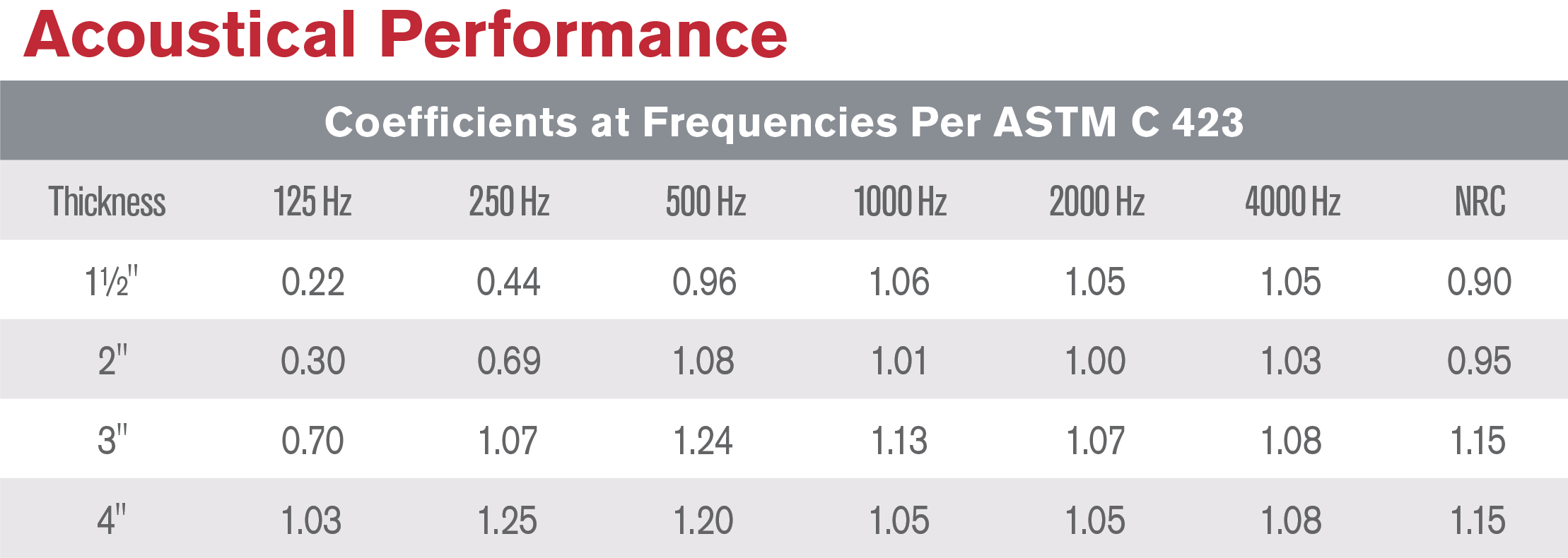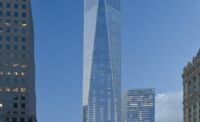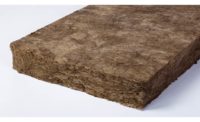More stringent building codes, advances in building science and building owners’ desire for more comfortable environments are driving increased interest in the role of continuous insulation. Both emerging construction trends (i.e. more innovative claddings) and market shifts (i.e. growing interest in sustainable building materials) are influencing how continuous insulation is used in today’s high-performing wall assemblies. Continuous insulation installed in the building enclosure delivers much more than thermal performance. Fire resistance, moisture mitigation and sustainability are just some of the performance attributes continuous insulation provides.
Today’s building product marketplace offers many continuous insulating material choices including extruded polystyrene (XPS), polyisocyanurate, expanded polystyrene (EPS), spray polyurethane foam (SPF) and mineral wool. In selecting an insulating material for the exterior wall assembly, factors to consider include the raw products composing the insulation as well as the manufacturing process, operational performance, combustibility, and moisture mitigation properties, as well as overall durability. Jobsite considerations such as the installation methods required to affix insulation should also be considered along with aesthetics and even the acoustic performance of an insulating material.
What continuous insulating material is right for a particular building enclosure? Every situation is unique, but among the various insulation options, mineral wool insulation is well suited to deliver a breadth of performance benefits. Properly installed behind steel and masonry façades, mineral wool can help impede the spread of fire, manage moisture and mold risk, improve occupant comfort and support sustainability goals. A good place to start when considering mineral wool as a continuous insulation is to think about the role continuous insulation plays in the exterior wall assembly.
A Higher Level of Insulating the Enclosure
While insulation batts are still widely used in wall assemblies to support thermal performance, depending on climate zone and construction type, most enclosures will benefit from continuous insulation in the exterior wall assembly. As its name implies, continuous insulation runs continuously across all the structural members of an enclosure, providing an uninterrupted insulating material free of thermal bridges. The only disruptions to this seamless approach are the requisite fasteners used to attach the insulation and service openings. Typically, continuous insulation is installed on the outside face of the building substrate, located behind the façade.
The codes and standards governing commercial building materials and construction methods have long recognized the value of continuous insulation installed in the exterior wall assembly. The mandatory installation of continuous insulation over steel stud framing was first incorporated in the ASHRAE 90.1-1999 edition. Since then, state codes across various climate zones have become more stringent. Compliance with these energy codes typically follows one of three paths—prescriptive (specifying R-value for insulation); performance (specifying performance for the overall assembly including above grade, below-grade and slab edge values); and cost budget method which evaluates annual operating costs.
Of course, codes are often viewed merely as specifying a minimum level of performance. Bodies such as ASHRAE, NetZero, USGBC and Architecture 2030 recognize that adding insulation in the building envelope is associated with a negative marginal cost or positive economic return over the material’s lifecycle. While codes and costs should always be part of the material selection process, desired performance factors are very important when evaluating and specifying continuous insulation. As architects and specifiers aim to go beyond code, they are considering the material properties of mineral wool as a continuous insulation. Following are several reasons why mineral wool is well-suited to the performance needs of today’s building enclosures.
Fire Resistance
From a life safety perspective, mineral wool is an ideal insulating material. Naturally non-combustible, mineral wool will not burn nor release smoke. This property is especially desirable in high-rise environments and in buildings such as hospitals where occupants may not be able to egress a building on their own accord.
From a fire resistance perspective, one of the trickiest challenges for building professionals is the International Building Code requirement for non-combustible wall construction and the energy code requirement that buildings be wrapped in air/water-resistive barriers which are often comprised of combustible materials. Mineral wool provides a naturally fire-resistant, non-combustible alternative to support fire resistance. When a building’s enclosure is wrapped in combustible materials—for example, a combustible water resistance barrier or an aluminum composite or high-pressure laminate cladding—using mineral wool insulation may assist with helping assemblies pass the NFPA 285 fire test.
NFPA has developed guidelines specifying what continuous insulation materials are permissible with various systems. For example, thermoplastic insulation can be used behind masonry, but cannot be installed behind metal panels. Mineral wool, however, can be used behind masonry or metal panels, as can “fire enhanced” polyisocyanurate. As part of a building’s perimeter fire containment system, mineral wool can limit the “leap frog” spread of fire via exterior wall surfaces—a threat which became tragically real during the 2017 Grenfell Tower fire. As non-traditional cladding systems become more common, the risk of vertical fire spread up a building’s exterior is becoming a key concern for many people working in the building and fire containment sectors.
Moisture Resistance
As an integral part of an enclosure’s hygrothermal performance, continuous insulation helps move the dew point closer to the outer face of the wall and as it does so, reduces the potential for condensation to arise inside the wall cavity. This performance attribute is valuable in offsetting potential problems that can arise in the wall, such as the development of mold or algae.
The moisture resistance of various insulating materials is an especially confusing point in today’s marketplace and claims may not accurately react the reality of the building environment. For example, when mineral wool remains exposed to the point of saturation, its insulating value is naturally reduced. However, once dried and not changed in form, mineral wool’s thermal properties return to their original levels. The thermal properties of mineral wool remain intact after exposure to moisture. Finally, as a vapor permeable insulation, mineral wool supports the movement of vapor throughout the cavity wall.
Thermal Performance
Insulations of many types, including mineral wool, can be installed in the exterior wall cavity, eliminating thermal bridges and increasing overall R-value performance. While batt insulation has typically been friction fit in interior stud cavities to provide thermal and acoustic performance, each stud creates thermal bridging, reducing actual thermal performance. However, continuous insulation used in conjunction with batts can optimize thermal performance because thermal bridging is only occurring at fasteners penetrating insulation, retaining heat in winter and restricting its infiltration during summer. Mineral wool provides an efficient approach to support thermal performance; delivering an R-value of 4.3 per inch (k-value 0.24) which translates to roughly 2-4 inches required by AHSRAE 90.1 or IECC across the U.S.
Sustainability
A big consideration when selecting any building material is how it contributes to sustainability. The composition and manufacturing process used to make mineral wool contributes to its sustainability. Containing no HFC or blowing agents, mineral wool is composed of natural rocks and 70-75 percent slag and does not contribute to greenhouse gases. The Life Cycle Assessment is a compilation and evaluation of a material’s inputs, outputs and potential environmental impact throughout its life cycle. Mineral wool offers a high level of recycled content that is validated by third-party certification. Consider that after just one month of use, a pound of mineral wool insulation saves the amount of energy used in its manufacture.
Used as a continuous insulation, mineral wool may contribute points to a number of LEED credit categories such as “Energy & Atmosphere Credit 1: Optimize Energy Performance”. As mineral wool helps to minimize the amount of energy needed to heat and cool a building, it results in reduced greenhouse gas emissions. This performance property may contribute points awarded based on energy efficiency above ANSI/ASHRAE/IESNA Standard 90.1-2007. Points may also be contributed to “Materials & Resources Credits 2.1 & 2.2: Construction Waste Management.”
Acoustics and Durability
From a sound management perspective, mineral wool as a continuous insulation can improve environmental quality. Figure 1 describes the noise reduction coefficient of different thicknesses of a typical mineral wool. As it insulates the enclosure, mineral wool, with a high noise reduction coefficient helps to create wall assemblies with high sound transmission classes that improve the indoor environment for occupants.

From a durability perspective, mineral wool is ideal for open joint assemblies. The Museum of the Moving Image in Astoria, New York, makes use of the water repellent and exposure resistant properties of mineral wool. While many foam plastics cannot be left subject to UV light or extreme temperatures (during construction or in open join systems), mineral wool can be exposed to UV rays, sleet, snow and ice without compromising its condition or losing R-value.
Installation and Compression Strength are Key
Of course, product performance is contingent upon proper installation; especially when it comes to avoiding problems with thermal bridging. There are really two options for mineral wool continuous insulation attachment in the exterior wall envelope. In the first, insulation is attached between fasteners. In concrete masonry unit buildings featuring masonry façades, mineral wool can be friction-fitted between the wall ties or secured with a clip attached directly onto a masonry wall tie.
For assemblies that require other cladding attachment methods, girts, clips, rails, or other methods are attached to the structure and mineral wool continuous insulation is secured between these attachment methods. In an effort to create more continuity and reduce thermal bridging, some of these attachment systems may be secured outside of the insulation once it has already been installed. Particularly in this application, the insulation must be a semi-rigid product with high compressive strength to hold the cladding attachment system under compression with little deflection for the life of the building.
While mineral wool continuous insulation first used in the second application method described above was initially identified by density, it is actually this compressive strength—the ability to resist deflection under load that is critical to the performance of the mineral wool for this use with a particular cladding and cladding attachment system. When specifying insulation, it is critical to select the compressive strength that corresponds with the requirements of the wall assembly.
A variety of hanger and fastener systems are available to install mineral wool behind metal panel façades. In buildings featuring masonry façades, mineral wool can be friction-fitted between the wall ties in a grid system or secured with a clip to secure directly onto a masonry wall tie. Owens Corning has developed an attachment guide that illustrates and explains how insulation products are installed in the wall and how they interact with other attachment mechanisms holding the cladding on the wall.
When specifying insulation, it is critical to select the compressive strength that corresponds with the requirements of the wall assembly. The insulating material must be able to hold the compression for the system to work. Specifying too high of a compressive strength may result in unnecessary cost, while specifying too low of a compressive strength could potentially cause a cladding system failure.
This fall, Owens Corning Thermafiber is expanding the compressive strengths available in its mineral wool portfolio. The patent-pending technology behind these products is enabling lighter-weight products to deliver mechanical performance exceeding that of higher weight/higher density products. The innovation was inspired by building science that shows greater density does not necessarily correlate to improved mechanical performance. For example, the new products allow an 8-pound per cubic foot product to deliver higher compressive strength and better thermal performance than an 11-pound per cubic foot product—effectively delivering a 25 percent reduction in weight. As contractors consider the movement of product up scaffolding and in transport, the lighter weight products also mean lighter loads for their crews.
Wrapping it all up, used as a continuous insulation, mineral wool delivers a number of performance benefits across the building enclosure. When architects and specifiers evaluate continuous insulation options in context with building design and construction site considerations, mineral wool can not only meet more stringent codes but deliver important performance benefits.




